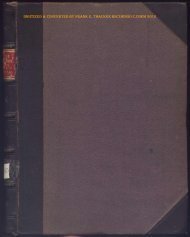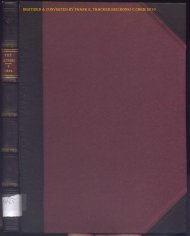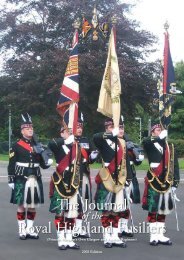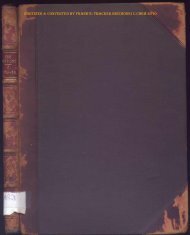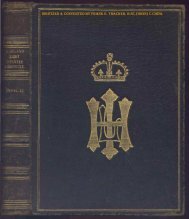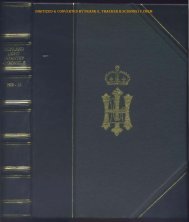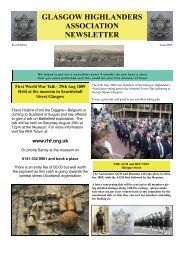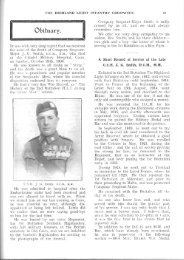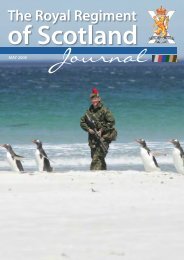The Outpost Vol 1 - The Royal Highland Fusiliers
The Outpost Vol 1 - The Royal Highland Fusiliers
The Outpost Vol 1 - The Royal Highland Fusiliers
Create successful ePaper yourself
Turn your PDF publications into a flip-book with our unique Google optimized e-Paper software.
THE OUTPOST. 155<br />
P.T.GOD<br />
OF ISCOYD.<br />
I AM one of those nearly extinct relics of a<br />
bygone age, namely, a retired <strong>Vol</strong>unteer<br />
Adjutant; and my hobby is a keen desire to<br />
get to understand how the English race came<br />
to establish itself in the British Isles, as far west<br />
as a line from Exeter to Edinburgh, to the<br />
temporary exclusion of our Welsh and Gaelic<br />
friends, and the permanent abolition of their<br />
language, customs and place-names east of that<br />
line. From my profession and training I have<br />
naturally approached this question from the<br />
military standpoint, and I find everything<br />
explained, and from Hengist and Horsa down to<br />
the founder of Edinburgh, a coherent and lucid<br />
story evolves itself. This story may not be in<br />
accordance with the patchwork of literary<br />
quotations which University professors have<br />
made to pass muster as history, but at anyrate<br />
it is coherent, which is more than can be said of<br />
more academical versions.<br />
<strong>The</strong> most interesting feature of the neighbourhood<br />
of Whitchurch is that it contains the<br />
frontier where this great conquest was first<br />
permanently checked, and that is why we find<br />
Wales and Welsh names within three miles of<br />
Whitchurch, and we shall see that, as we are<br />
dealing with the vestiges of a conquest, military<br />
science explains everything. Though there is<br />
evidence that the site of \Vhitchurch was<br />
occupied in Roman times, I have not space to<br />
deal with that period beyond pointing out that<br />
it lay near the route by which the Romans must<br />
have travelled from Uriconium on the Severn to<br />
Chester, their great fortress on the Dee.<br />
Near Whitchurch more districts or territorial<br />
divisions meet at one point than anywhere else in<br />
the world. Where Judbrook and Grindley Brook<br />
join the Wych Brook we find meeting, 2 Countries<br />
-England and Wales, 3 Counties-Shropshire,<br />
Cheshire and Flintshire, 2 Dioceses-Lichfield<br />
a::ld Chester (in fact there will be 3 if the Welsh<br />
Church Bill ever becomes law, since that will<br />
put Iscoyd into St. Asaph), 2 Provinces-Canterbury<br />
and York, 3 Hundreds-East Bradford,<br />
Broxton and Maelor, 3 parishes, 3 townships,<br />
3 properties, 3 farms, 3 brooks, etc., etc. Any<br />
one of the first eighteen of these names might<br />
head a chapter on national history, as the rest<br />
might on locaL How has it come about that<br />
so many divisions of sterling historical interest<br />
meet at such a quiet and unassuming spot in a<br />
pastoral district, and so many vestiges of<br />
ancient conflicts in such an abode of peace?<br />
Local people who see these topograph:cal<br />
phenomena everyday cannot be expected to<br />
take an interest in the questions they raise; in<br />
fact 1 don't want them to, as they are far too<br />
busy making cheese, without which we should<br />
not get our rents, and, besides, we all wish the<br />
neighbourhood of Whitchurch to retain the<br />
position it holds as, facile princeps, the premier<br />
cheese district of the world.<br />
But r have some hopes that our local<br />
arch



